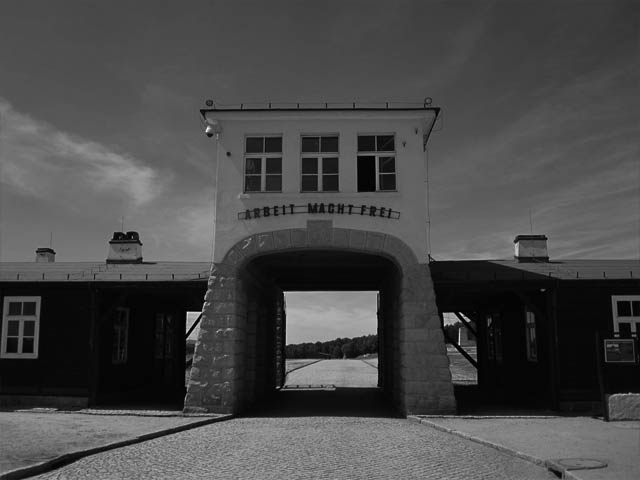KL Gross-Rosen - interesting places
KL Gross-Rosen was located in the administrative area of the German state (Third Reich), near the present-day village of Rogoźnica (post-war name) in the Dolnośląskie Voivodeship. It operated in the years 1940-1945. 125,000 prisoners passed through the camp over the period of 5 years. 40,000 are estimated to have died. The camp had about 120 sub-camps. A large quarry operated in the vicinity of the camp, in which prisoners worked in inhuman conditions.
There was no gas chamber in the camp. Prisoners died due to exhaustion, sickness, exhaustion and starvation. They were murdered for failing to comply with the regulations. Most Jews and Soviet prisoners of war were treated extremely cruelly. A particularly tragic moment was February 1945 and the murderous death march which took place while evacuating prisoners.
KL Gross-Rosen was included in the implementation of the criminal extermination undertakings of the Third Reich, an example of which was the participation in the liquidation of Soviet prisoners of war groups selected in the Lower Silesian camps – "scum, Poles, clergy and Jews, as well as enemies of the Third Reich". All these people were sent to KL Gross-Rosen.
After the war, for about 2 years, a secret NKVD prison operated in KL Gross-Rosen. This greatly hindered the preservation of archives and material remains of the former German Nazi camp. For this reason, despite many attempts made by prisoners, it was impossible to create a museum, which was finally established in 1983. Two buildings and some of the secondary ruins and barrack foundations survived. The quarry was still in operation.
Descriptions, details and facts will appear on the subject of KL Gross-Rosen and the seven largest extermination centers in the occupied Polish lands. Meanwhile, I would like to introduce you to some important places that were located in the camp in Rogoźnica.
- The camp gate. The gate has remained unchanged to this day. It separated the part in which the prisoners were kept from the barracks and SS warehouses. On the gate, there was a cynical inscription "Arbeit macht frei", meaning "work makes you free", which was, among others, in the camps in Dachau, Auschwitz, Sachsenhausen, Theresienstadt, and Flossenbürg.
- The assembly square. It was a place where an appeal took place on a daily basis and the number of prisoners was checked by prisoners called "Rapportschreiber". It also served as a football pitch as there was a football league in the camp. Depending on the season, four to even ten teams could compete in it. Unfortunately, when it comes to knowledge, we rely on prisoners' notes, which are quite chaotic and sometimes divergent. There were about a hundred players in Gross-Rosen. Mostly Poles, Germans, Czechs, Hungarians and Russians played.
- Gallows, where public executions of would-be refugees or prisoners who violated the camp regulations were held from Monday to Saturday. In addition to the convicted person, two other prisoners who were executioners, who came from the same city or region, participated in the execution. They received three cigarettes from the SS for carrying out the executions.
- Camp Bell. It was a wooden building on which the bell was hung. It was used to wake up prisoners, call them for appeals, signaled the time for going to work, meals, so-called Lagersperre, lights off and lights-out period. The bell was one of the few camp facilities that survived until the end of the war. The belfry was destroyed due to a windstorm in 2002. The facility was reconstructed in the third quarter of 2003.
- Symbolic Trees, withered Oak and Cherry are two unique trees in the camp. The oak grew on the embankment over the "wall of death", the place of execution of prisoners of the camp and prisoners of war. Currently, there is a "Place of Commemoration" and a place where the ashes of the murdered were spread, over which a large tree grows – a cherry, that is, the second historical natural monument and a silent witness to the death of thousands of prisoners.
- Field crematorium. Before the stationary crematorium was built in the camp, the bodies of the victims were burned in the so-called "field crematorium", in the open air, by a specially designated group of prisoners. Later, a brick crematorium was built with three furnaces for burning corpses.
- Prisoner kitchen. The newly built kitchen was made of brick with a wooden superstructure, which was accessed by stairs from inside and outside the building. In the lower part, preserved to this day, there were warehouses and a vegetable peeler, and on the first floor (which does not exist today) there were kettledrums in which food for prisoners was cooked. At the end of the camp's existence, due to the influx of evacuation transports, the kitchen worked around the clock. At that time, many prisoners received their only warm meal in the middle of the night.
- French Block (block 9/10). It was built in 1943. It differed from the rest of the residential barracks. It consisted of a stone and wooden basement, designed for 600 people, as well as a ground floor part. Initially, new arrivals were quarantined in these rooms, the so-called Zugangs. In October 1944, transports from France and Belgium began to arrive in KL Gross-Rosen, and were placed placed in this block. Hence, the prisoners called it "the French block." In the basement, preserved until today, there is a reconstructed prisoner room. These prisoners were sent to the camp as part of the "Nacht und Nebel" campaign ("Night and Fog").
These are just some of the places situated in the camp. The whole camp has an amazing history. There are a lot of facts and curiosities related to it. It is a camp often overlooked and not mentioned as a mass extermination center. Personally, I recommend delving into the history of this amazing and mystical place.





